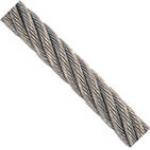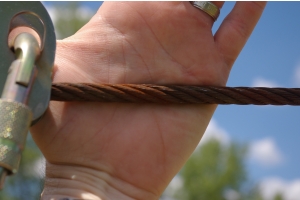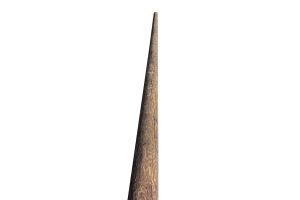Wire Rope Construction and Selection

Wire rope is a mainstay and central component of modern ropes course, challenge course and zip line installations. In teh ropes course and zipline industry we typically utalize flexible wire rope like 1/4" to 3/8" GAC (Galvanized Aircraft Cable)or IWRC (Independant wire rope core) in sizes up to 1". It's important for designers, installers, inspectors and operators to understand some basics on wire rope design and inspection.
Wire rope construction
Wire rope is made up of a number of individual wires that are twisted together. The wires can be made of a variety of materials, including steel, stainless steel, and aluminum. The type of material used will depend on the application. For example, steel wire rope is strong and durable, but it is also heavy. Stainless steel wire rope is corrosion resistant, but it is also more expensive than steel wire rope. Aluminum wire rope is lightweight, but it is not as strong as steel or stainless steel wire rope.
The wires in a wire rope are twisted together in a helical pattern. The lay of the rope is the direction of the twist. There are two main types of lay: right lay and left lay. Right lay rope twists in a clockwise direction when viewed from the end. Left lay rope twists in a counterclockwise direction when viewed from the end.
The number of wires in a wire rope can vary, but it is typically between 6 and 37. The number of wires will affect the strength and flexibility of the rope. A rope with more wires will be stronger, but it will also be less flexible.
Wire rope flexibility
The flexibility of a wire rope is determined by the number of wires and the lay of the rope. A rope with more wires will be more flexible than a rope with fewer wires. A rope with a right lay will be more flexible than a rope with a left lay.
Working load limit and breaking strength
The working load limit (WLL) of a wire rope is the maximum load that the rope can safely support. The breaking strength of a wire rope is the maximum load that the rope can withstand before it breaks. The WLL of a wire rope is typically about 1/5th of the breaking strength.
Wire rope inspection
Wire rope should be inspected regularly for signs of wear and damage. Common signs of wear and damage include:
- Broken wires
- Kinks
- Crushes
- Corroded wires
- Splices
If any of these signs are found, the wire rope should be replaced.








